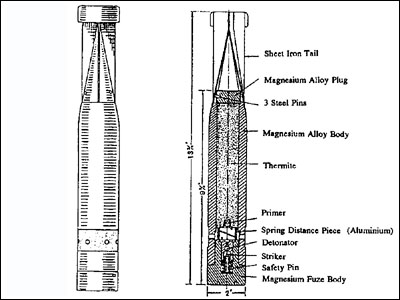1kg German Incendiary bomb found in a shed in south-east London
Police were called to a house in Mottingham (Bromley) after a report of a suspected unexploded bomb. Consequently, a police cordon was established, and the road was closed whilst the incident was investigated.
1kg German incendiary bomb
An army Explosive Disposal Ordnance team later arrived at the scene and identified the device as a German 1kg incendiary bomb.
The bomb appears to be intact, however, was classified as inert. To the untrained eye, it would be difficult to tell the difference. All suspect items should always be treated as if they are live UXO.
Civilians and ex-service personnel have a habit of keeping UXO as souvenirs. This practice is of course not recommended, however, is surprisingly common.

WW2 German incendiary sub-munitions
The device appears to have been a common 1kg B1E type incendiary. A small bomb with a magnesium alloy body and incendiary fill; a chemical called thermite. When striking the ground, a percussion charge would ignite the thermite, causing an intense incendiary effect.
The standard B1E type accounted for the majority of German incendiary bombloads. However, some bombloads included the B2EZ type which had a small explosive charge and delay fuse. The inclusion of these models acted as a deterrence to anyone attempting to extinguish the bomb before it could fully ignite.
The incendiary component within the bomb burns aggressively at over 1,000°C, creating a substantial burn hazard. As such, all models of these bombs should be considered dangerous, not just the explosive type.
Between 1940 and 1944 the Luftwaffe dropped over one million of these devices on Britain. The most commonly encountered unexploded Luftwaffe bombs in the UK are therefore 1kg B1Es.
Clearing UXO
At Brimstone, we provide bespoke solutions for UXO risk mitigation, including risk assessments, surveys, investigation and disposal services. If you’d like advice on your project, get in touch with our commercial team.
You can also keep up to date with Brimstone by following us on Facebook, Instagram, Twitter, LinkedIn and YouTube.